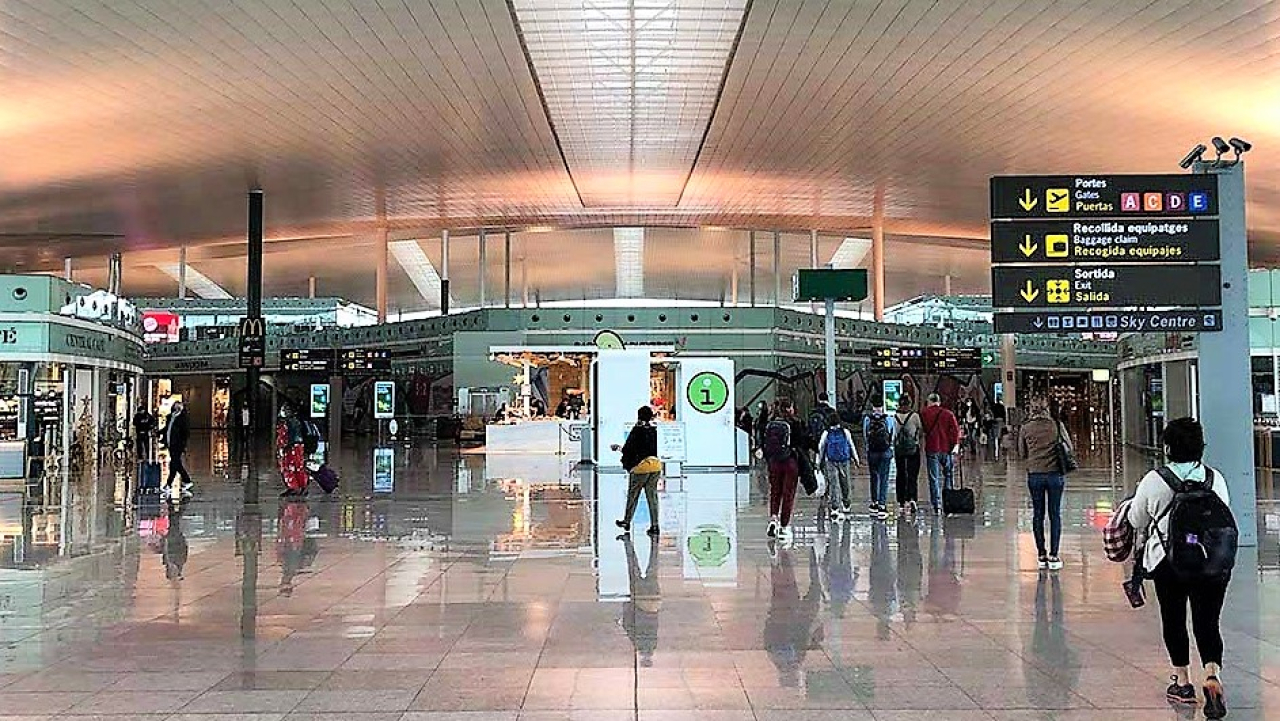es

AENA SME, SA
68
Airports
4
Countries
59
Reports

Madrid Airport's distinctive ceiling in Terminal 4.
© Elena Rabkina / Unsplash
Spain’s airport operator Aena saw 2023 consolidated commercial revenue jump by 25% to €1.55 billion ($1.68 billion), well ahead of traffic growth of 16%.
Aena, which runs a large network of 46 Spanish gateways, the best known being the hub Madrid-Barajas, and Barcelona-El Prat, also operates London Luton Airport in the United Kingdom, and 11 gateways in northeast Brazil.
Passenger numbers across the group rose to 314.1 million (up 16% on 2022), with Spanish-only airports seeing a similar percentage increase to 283.2 million.
Aena noted a significant increase in commercial activity last year versus pre-pandemic. Sales per passenger were 14% higher than in 2019—very different from the experience at London Heathrow—with all commercial business lines performing well. Revenue from fixed and variable rents invoiced also surpassed 2019 figures.
Across the commercial revenue streams, the biggest gains came from specialty shops with revenue up 48% to €134 million, followed by food and beverage (F&B), up 33% to €325 million, and duty-free up 23.5% to €411 million. Other commercial streams include car parking and rental, and VIP services.
Lagardère Travel Retail has several specialist shop concessions in the Aena network while Avolta has the key duty-free concessions following a $19 billion tender last year when the company, then called Dufry, retained most of its business in Spain.
Aena Group’s total consolidated revenue last year rose to €5.14 billion ($5.6 billion), up by 21.3% versus 2022. The company also drove up net profit to €1.63 billion, from €901.5 million year-over-year.
The company hopes that the key summer season, when much of Northern Europe descends on Spain, will ensure 2024 continues 2023’s march. Sluggish economies may dampen demand, but the airport operator has some cards up its sleeve.

The shopping precinct at Barcelona Airport.
© Aena
The uncertain macroeconomic picture might play out better for Aena than its rivals this year because its core airlines—unlike at Heathrow and Frankfurt for example—are low-cost carriers. They command 62% of the market, led by Ryanair and Vueling and they are more likely to be used when consumers are feeling the pinch.
Aena will also gain from new tenders this year. The contract for car rental activity for the entire Aena network in Spain is coming up, as well as roughly 9% of the food and beverage estate, and 13% of specialty shops (both percentages are in terms of turnover).
Aena has also updated its strategic plan for the period 2022 to 2026 and this is scheduled to be presented tomorrow. It was originally centered on Spain as a global tourism hub and presented in November 2022.
At the time, the operator expected that by 2026, minimum annual guarantees (MAGs) from commercial concessionaires would exceed those of 2019 by up to 65%. Aena also forecast commercial business revenue to grow in 2026 by 23% versus 2019 and for commercial revenue per passenger to increase by at least 12% over that period.
[To read the unabridged story on Forbes.com, click here.]